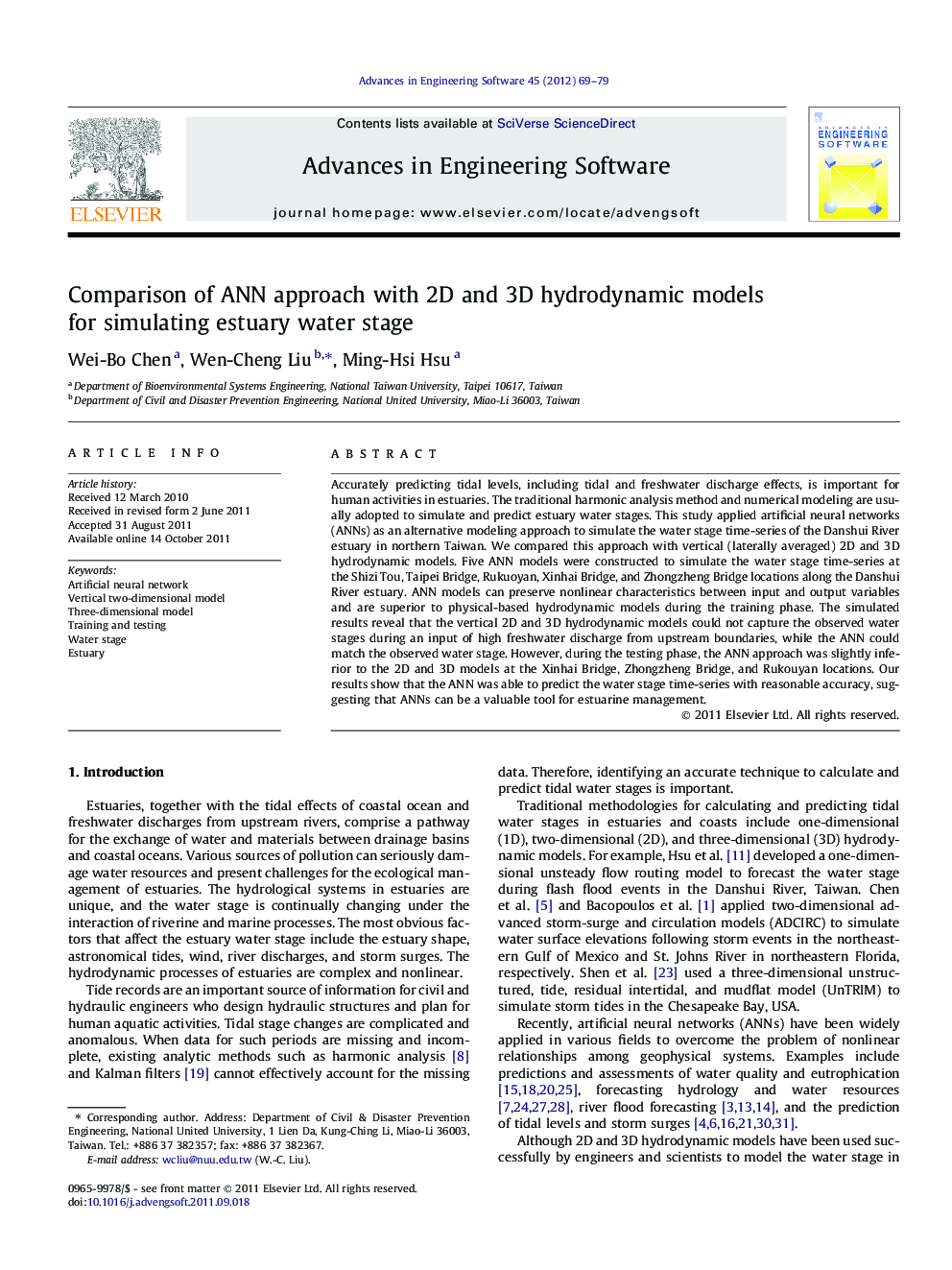| Article ID | Journal | Published Year | Pages | File Type |
|---|---|---|---|---|
| 566198 | Advances in Engineering Software | 2012 | 11 Pages |
Accurately predicting tidal levels, including tidal and freshwater discharge effects, is important for human activities in estuaries. The traditional harmonic analysis method and numerical modeling are usually adopted to simulate and predict estuary water stages. This study applied artificial neural networks (ANNs) as an alternative modeling approach to simulate the water stage time-series of the Danshui River estuary in northern Taiwan. We compared this approach with vertical (laterally averaged) 2D and 3D hydrodynamic models. Five ANN models were constructed to simulate the water stage time-series at the Shizi Tou, Taipei Bridge, Rukuoyan, Xinhai Bridge, and Zhongzheng Bridge locations along the Danshui River estuary. ANN models can preserve nonlinear characteristics between input and output variables and are superior to physical-based hydrodynamic models during the training phase. The simulated results reveal that the vertical 2D and 3D hydrodynamic models could not capture the observed water stages during an input of high freshwater discharge from upstream boundaries, while the ANN could match the observed water stage. However, during the testing phase, the ANN approach was slightly inferior to the 2D and 3D models at the Xinhai Bridge, Zhongzheng Bridge, and Rukouyan locations. Our results show that the ANN was able to predict the water stage time-series with reasonable accuracy, suggesting that ANNs can be a valuable tool for estuarine management.
